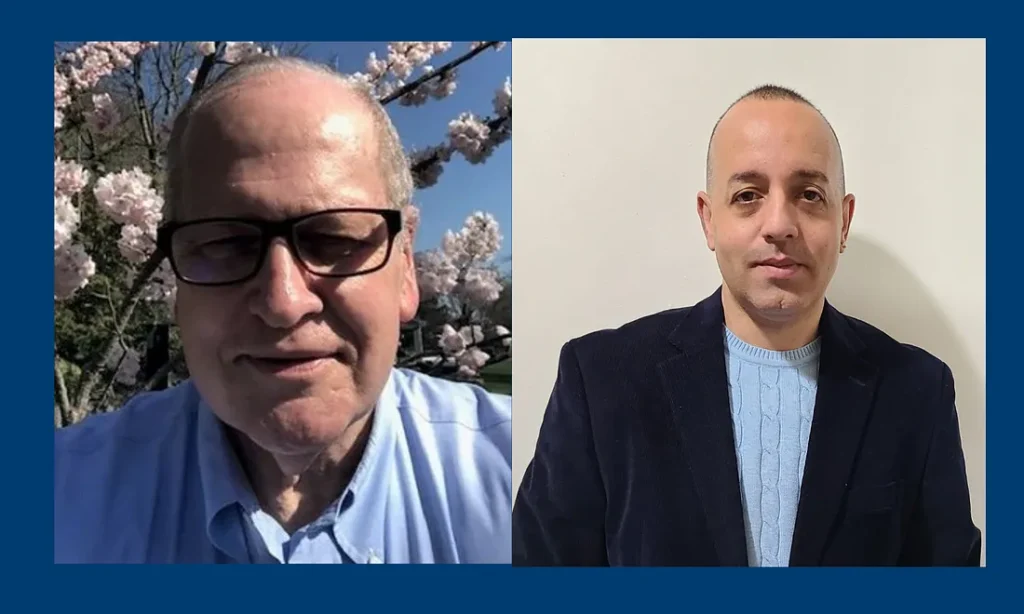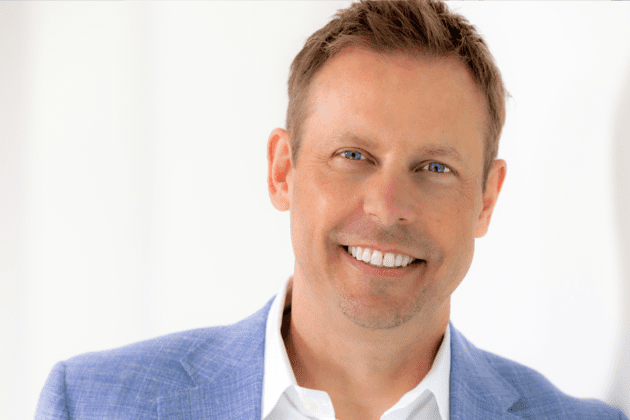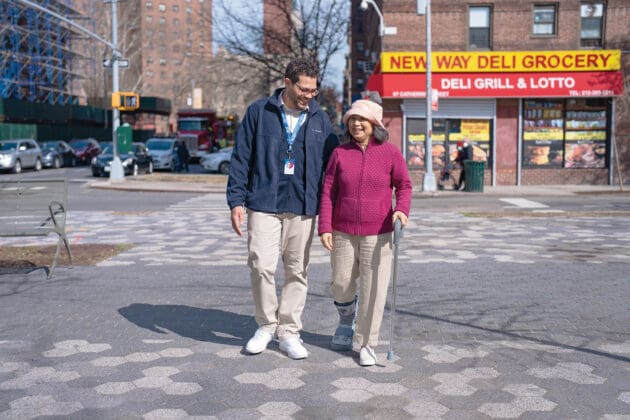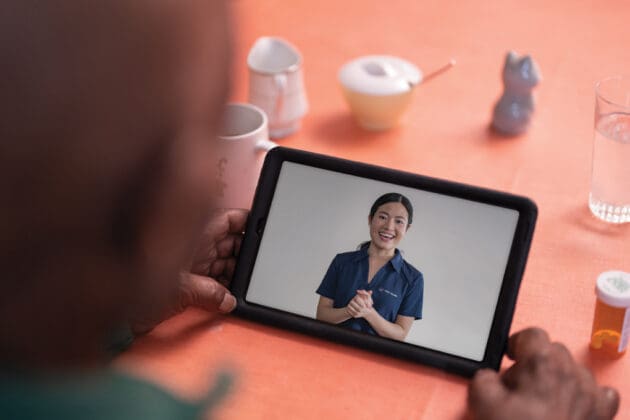
“Treatment is not always purely medical. It’s psychosocial — a housing issue, mental health issue, family issue.” — Dr. Jay Dobkin, Chief Medical Officer, Health Plans, VNS Health
“Epidemics do not announce themselves but enter on cat’s paws.” — Ronald Bayer & Gerald M. Oppenheimer, AIDS Doctors: Voices from the Epidemic
It’s been more than 42 years since the Centers for Disease Control and Prevention (CDC) first reported the syndrome of diseases that would go on to be named AIDS — an acronym for acquired immunodeficiency syndrome, which is caused by human immunodeficiency virus, or HIV. On June 5, 1981, an edition of the CDC’s Morbidity and Mortality Weekly Report described a rare lung infection seen in a group of gay men in Los Angeles, raising the alarm that a deadly disease was spreading mysteriously.
In the intervening years, more than 40 million people have died worldwide of HIV/AIDS, and we’ve seen breakthrough treatments — in addition to testing and prevention — transform AIDS from a death sentence into a manageable illness. We’ve even gone through another global pandemic. Yet, we still have a lot of work to do every day for people living with or at risk of HIV/AIDS, to improve health care access and equity and support them in the full context of their lives, including preventive care, psychosocial care, nutrition, housing and other social determinants of health.
To get a ground-level perspective of the most pressing issues today in the AIDS epidemic, I spoke with my colleague Hondo Martinez. He is the manager of community outreach for SelectHealth, a specialized Medicaid plan offered by VNS Health to people living with HIV and others who are gender nonconforming or homeless.
Arthur Fitting: It is important that we have a realistic picture of the current landscape of people who are living with HIV/AIDS and are in need of services. Please help us understand the HIV-positive populations you are seeing in the community now.
Hondo Martinez: Every day we’re out there connecting with the community, and despite the many advances in how we look at HIV/AIDS today, especially contrasted with four decades ago, people living with HIV still experience a lot of adversity along with their HIV diagnosis. Many of the health plan members enrolled with our SelectHealth special needs plan are at risk of falling between the cracks in our health care system. They might be experiencing homelessness. They could be in a domestic violence situation or experiencing food insecurity. It’s so hard to untangle — and it is all connected.
“Every day we’re out there connecting with the community, and despite the many advances in how we look at HIV/AIDS today, especially contrasted with four decades ago, people living with HIV still experience a lot of adversity along with their HIV diagnosis.”
-Hondo Martinez
All this means that there’s a real need in our community for health plan coverage that takes the life experience of people with HIV or AIDS into consideration. With this in mind, we tailored our SelectHealth plan to the needs of anyone who is HIV-positive or someone who might be experiencing homelessness regardless of HIV status — across all identities, including transgender and gender-nonconforming. The plan takes a holistic approach to primary care, understanding that with these populations there’s more at play than just a medical condition.
Arthur Fitting: It seems that the COVID-19 pandemic was like ripping the Band-Aid off, showing us the depth of need in underserved communities.
Hondo Martinez: That’s right. During the pandemic we saw food insecurities exacerbated. We saw lack of access to medical care exacerbated. We saw the divide widen between the haves and the have nots. We saw that some people were able to attend virtual doctor’s appointments, while others had no access to virtual doctors’ visits because they had no online device. It definitely shed a lot of light in terms of what people who are HIV-positive — and other underserved communities — were experiencing in terms of accessing their doctors, their prescriptions, support for mental health and substance use disorders and even basic necessities like food.
To cite one major example, it’s become harder to secure housing, particularly for people with HIV. We need truly safe and affordable housing. We know that for this population there are some supportive housing networks and single-room occupancies, but some of these places that I’ve visited over the years aren’t always safe, which is why I like to put the word safe first.
We also need safe neighborhoods. Some of the new affordable housing projects are renovated with all the bells and whistles, but the neighborhood isn’t safe. If we want somebody to live a healthy life, the advice is, get out and walk more often for exercise. How do you do that if your neighborhood isn’t safe, or if you don’t have green spaces or other places to walk?
Arthur Fitting: That’s so true. What other ways should we be working to create healthier communities moving forward?
Hondo Martinez: Let’s keep up the education to make sure primary-care providers and clinic staff have in-depth conversations with the people coming in to receive services. It’s not enough to say, ‘Adhere to your medication, U=U, undetectable untransmittable.’ All too often, the way the health care system is set up, a provider has to see as many patients as possible. So often the conversation goes, ‘You’re adherent to your medication. Let’s see your labs… Okay, you’re doing great. We’ll see you next time.’ But it’s also important to understand someone’s social determinants of health. It’s important to ask, ‘What else are you dealing with? How’s your emotional/mental health? Can you pay your rent? Do you have enough food? Do you want to go back to school?’
Arthur Fitting: You’re right, it really has to be a holistic approach, looking at all the things it takes for someone to regain and maintain their health. Although there have been so many advances in health care over the years, with all the treatments and technologies, there aren’t that many advances in the delivery of health care. When the HIV/AIDS crisis made a transition into a chronic illness mode, the guardrails seemed to come off. Now that people’s physical symptoms were for the most part stabilized, we got more relaxed about treating the social symptoms. But they aren’t separate.
“When the HIV/AIDS crisis made a transition into a chronic illness mode, the guardrails seemed to come off. Now that people’s physical symptoms were for the most part stabilized, we got more relaxed about treating the social symptoms. But they aren’t separate.”
-Arthur Fitting
Hondo Martinez: Not at all. That’s the gap that a specialized plan like Select Health helps to close. It assigns a care manager to look at everything, primary care, comorbidities, substance use, behavioral health. People experiencing HIV so often have other needs, too. It’s multifaceted, trying to provide care for people who are HIV-positive. You need this holistic approach to primary care, understanding that there’s more things that are at play besides just a doctor’s visit — the social determinants that we just talked about contribute significantly to health.
There’s also a prevention component to care. Just because someone has HIV doesn’t mean they need to struggle with poor mental health. Today, many HIV+ people live healthy lives, so we support that as well. Access to a doctor on a regular basis is a way to stay healthy and prevent spread of the virus, as well as STDs, or Hep B or Hep C. It’s about good health.
Arthur Fitting: The World Health Organization has just ended the global emergency status for COVID-19. What lessons from the pandemic can we take forward in caring for people with HIV/AIDS?
Hondo Martinez: I think there are a lot of parallels between the two pandemics. We see a health care system that tries to mobilize the best that it can during a crisis. And then once the crisis is over, it seems to be business as usual again. There used to be an urgency to HIV/AIDS care. Someone would test positive, and there was a rush to get them treatment and services, housing, food stamps, other public assistance. And then as we moved away from that, we started to get this sense that this is no longer a pressing issue.
I definitely want to acknowledge the fact that HIV is no longer a death sentence. It is a chronic, manageable illness. But we have to continue to close gaps in care, to equalize access to treatment and address the many social factors that can sustain health beyond the immediate crisis. Our health care system needs to take that on — and we need to be relentless in helping to make it happen.


